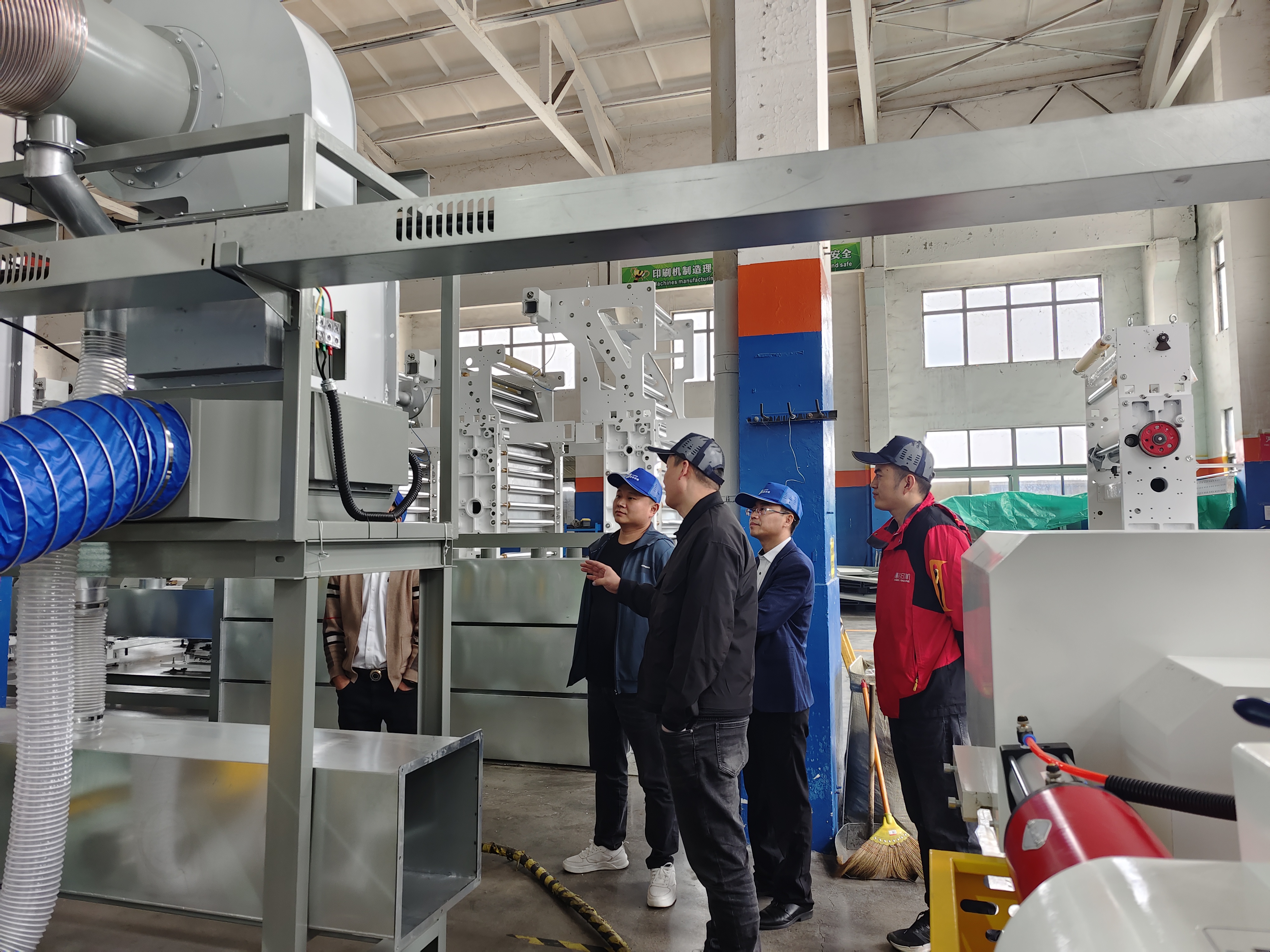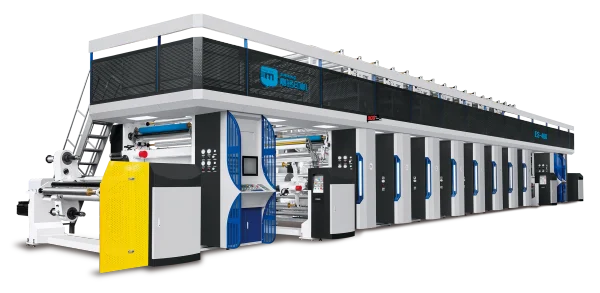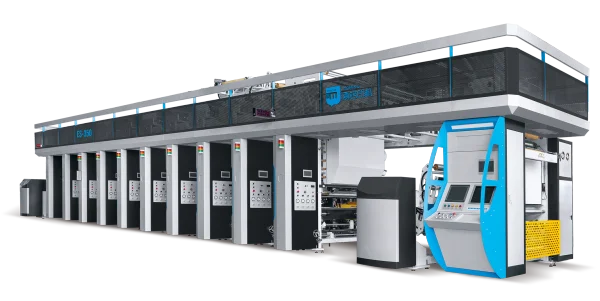- This topic is empty.
-
AuthorPosts
-
2023-12-05 at 6:18 pm #3202
Gravure printing has long been a go-to choice for high-quality, mass-produced prints, from magazines and catalogs to packaging materials and even currency. But have you ever wondered how these remarkable machines operate? In this blog post, we'll delve into the operating system of a gravure printing machine, explore its components and parts, uncover its advantages, troubleshoot common issues, and leave you with a comprehensive understanding of this impressive technology.
Understanding the Operating System of a Gravure Printing Machine
The operating system of a gravure printing machine is an essential component that ensures efficient and accurate printing processes. It consists of various interconnected parts working together seamlessly to produce high-quality prints.
One key element of the operating system is the control panel, which allows operators to set parameters such as print speed, ink viscosity, and temperature. This user-friendly interface simplifies the operation process and enables precise adjustments for optimal print results.
Another crucial part is the tension control system, responsible for maintaining consistent tension on the substrate throughout the printing process. This ensures uniform ink application and helps prevent issues like wrinkling or stretching of materials.
Additionally, there are sensors integrated into the machine that monitor variables such as web alignment, registration accuracy, and drying temperature. These sensors provide real-time feedback to keep the printing process in check and allow quick identification of any deviations or errors.
Furthermore, an advanced gravure printing machine may incorporate automatic inspection systems using cameras or scanners. These systems can detect defects like streaks or color variations during production, allowing for immediate corrective actions without compromising product quality.
Understanding how each component functions within a gravure printing machine's operating system is crucial for achieving consistent output with minimal downtime. This knowledge empowers operators to troubleshoot issues effectively while maximizing productivity and ensuring customer satisfaction.

Components and Parts of a Gravure Printing Machine
A gravure printing machine is a complex piece of equipment that requires various components and parts to function properly. Understanding these elements is crucial for operating the machine efficiently.
One of the key components of a gravure printing machine is the cylinder. This cylindrical roller is engraved with tiny cells that hold ink and transfer it onto the substrate. The cylinder rotates as the printing process takes place, ensuring precise image reproduction.
Another important part is the doctor blade assembly. This component controls the amount of ink transferred onto the cylinder's surface by scraping off excess ink, resulting in clean and consistent print quality.
The drying system plays a vital role in speeding up ink drying time after it has been applied to the substrate. This system typically includes heaters or hot air blowers to evaporate solvents from the printed material quickly.
Additionally, there are various tension control systems present in a gravure printing machine. These mechanisms ensure proper tension levels on both incoming and outgoing materials, preventing wrinkles or distortions during production.
Other essential parts include an unwind unit for feeding raw materials into the machine, registration systems for accurate alignment of colors, and an electrical control panel to monitor and adjust different parameters throughout operation.
Understanding each component's function within a gravure printing machine provides operators with valuable knowledge necessary for troubleshooting issues effectively. Familiarity with these parts allows users to identify problems promptly and implement appropriate solutions without disrupting production workflows.
Advantages of Gravure Printing Machine
When it comes to high-quality and consistent printing, gravure printing machines have a clear edge over other types of printing methods. These machines offer several advantages that make them a popular choice in the industry.
One major advantage is the ability to produce sharp and vibrant prints. The engraved cylinders used in gravure printing allow for precise ink application, resulting in crisp images with rich colors. Whether you're printing packaging materials, labels, or magazines, the end result is a visually appealing product that catches the eye.
Another benefit of gravure printing machines is their exceptional speed and efficiency. With high-speed rotations and continuous feeding systems, these machines can churn out large volumes of prints in a short amount of time. This makes them ideal for mass production scenarios where time is crucial.
Durability is also a key advantage offered by gravure printers. The engraved cylinders are made from sturdy materials such as steel or copper, ensuring long-lasting performance even under heavy use. Additionally, the drying process used in gravure printing helps create prints that are resistant to smudging or fading over time.
Moreover, gravure printers excel at handling different types of substrates. Whether you need to print on paper, plastic films, foils or even textiles, these versatile machines can accommodate various materials without compromising print quality.
Furthermore, one cannot overlook the cost-effectiveness of gravure printing machines. While initial setup costs may be higher compared to other options like flexography or offset lithography, these machines offer excellent return on investment due to their long lifespan and minimal maintenance requirements.
In conclusion,the advantages offered by gravure printing machines make them an attractive choice for businesses seeking top-notch print quality at high speeds while maintaining durability and versatility across different substrates. With advancements in technology, these machines continue to evolve and offer even more benefits for the printing industry.

Common Issues and Troubleshooting Tips
Gravure printing machines, like any other complex machinery, can sometimes encounter issues that may disrupt the printing process. While these problems can be frustrating, there are often simple troubleshooting steps you can take to resolve them.
One common issue is ink smearing or streaking on the printed material. This could be caused by a variety of factors such as improper temperature settings or worn-out doctor blades. To troubleshoot this problem, check the temperature controls and ensure they are set correctly for the type of ink being used. Additionally, inspect and replace any worn-out doctor blades if necessary.
Another issue that may arise is poor image registration, where the colors do not align properly on the printed material. This could be due to misalignment in the plate cylinders or incorrect tension settings. To address this problem, carefully realign the plate cylinders according to manufacturer's guidelines and adjust tension settings as needed.
A third issue that might occur is uneven ink distribution across the print surface. This can result in blotchy or faded prints. One possible cause could be an improperly adjusted impression roller pressure or insufficient ink viscosity. To troubleshoot this problem, adjust the impression roller pressure according to recommended guidelines and ensure proper viscosity of ink by adding solvent if required.
Mechanical faults such as motor malfunctions or sensor errors may also occur with gravure printing machines. In such cases, it is important to consult with a trained technician who has expertise in machine repairs to diagnose and fix these issues effectively.
Remember that troubleshooting common issues requires careful observation and knowledge of your specific gravure printing machine model's operating system manual provided by its manufacturer. Regular maintenance and following recommended guidelines for operating the machine can help prevent many of these problems from occurring in the first place.

Conclusion
Gravure printing is a highly versatile and efficient printing method that has revolutionized the packaging and publishing industries.
In this article, we explore the various components and parts that make up a gravure printing press. From the roller to the doctor blade, every element plays a vital role in ensuring high-quality printing.
Understanding how gravure printing presses work is crucial for anyone working in the printing industry or considering investing in this technology. The knowledge gained by understanding its operating system enables users to maximize efficiency, achieve consistent quality printing, and effectively troubleshoot problems when they arise.
Wuxi Jast Packaging Machinery Co., Ltd. is an enterprise mainly engaged in the production of bag making machines. Founded in 1990, the company is a professional manufacturer of bag making machines that combines mechanical manufacturing and automation control.
Welcome to contact us,if you need.
Jast Packing Machinery
Trueland1589@outlook.com -
AuthorPosts
- You must be logged in to reply to this topic.